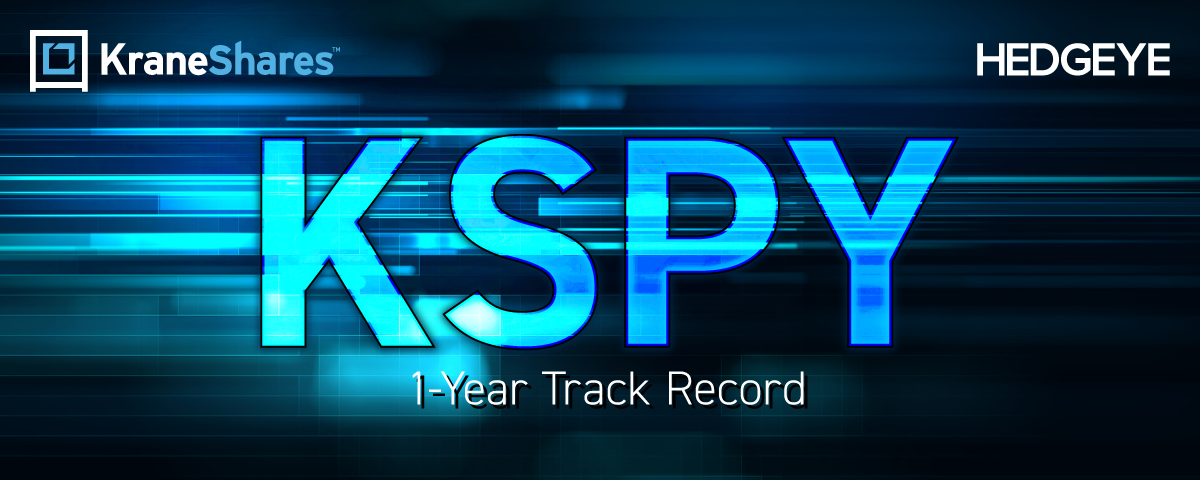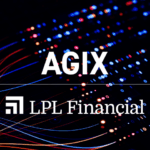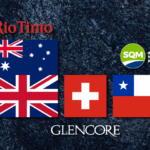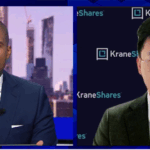
KraneShares Hedgeye ETF KSPY Celebrates 1-Year Track Record
New York, NY – August 21st, 2025 – KraneShares is proud to announce the 1-year anniversary of the KraneShares Hedgeye Hedged Equity Index ETF (Ticker: KSPY). Since its launch on July 16, 2024, KSPY has provided investors with a systematic solution for participating in the U.S. equity market, combining opportunities for capital appreciation with conscious risk management.
From inception, KSPY returned 9.53%, with an annualized volatility of 12.47%. Over the same period, the S&P 500 returned 14.12% with an annualized volatility of 19.46%.1
The performance data quoted represents past performance. Past performance does not guarantee future results. The investment return and principal value of an investment will fluctuate so that an investor’s shares, when redeemed or sold, may be worth more or less than the original cost. Current performance may be lower or higher than the performance quoted. For performance data current to the last month-end, please visit https://www.kraneshares.com/kspy.
The past year has included moments of significant market turbulence. Notably, from February 19th, 2025 to April 8th, 2025, when the S&P 500 experienced a peak-to-trough drawdown of -18.75% as markets digested the “Liberation Day” tariffs, KSPY limited its decline to -11.67%.2 The fund’s annualized volatility during that period was just 19.23%, compared to the S&P 500 Index’s 26.78%.2
“In today’s rapidly changing market environment, investors are seeking strategies that balance upside potential while managing volatility,” said Brendan Ahern, CIO at KraneShares. “KSPY’s differentiated approach enables investors to stay invested while proactively managing risk during periods of uncertainty. Additionally, we believe investors who want to put new money to work but are cautious about current valuations and the sustainability of the U.S. bull market may find KSPY attractive.”
KSPY was developed in collaboration with Hedgeye Asset Management and leverages Hedgeye’s proprietary Risk Range™ Signals, a quantitative tool developed by Keith McCullough during his time as a hedge fund manager. These Signals analyze price, volume, and volatility, with the goal of identifying entry and exit points. Proving effective, as the S&P 500 has closed within Hedgeye’s daily published Risk Range™ 83% of the time since 2015.3
“Hedgeye’s Risk Range™ Signals provide a framework allowing KSPY to systematically adjust portfolio exposure,” said John McNamara, CIO of Hedgeye Asset Management. “The goal being to benefit when market conditions are favorable and prioritize risk management when adverse. We believe KSPY’s performance over this first year reflects the strategy’s effectiveness in varying market conditions.”
With features such as proactive risk management and the flexibility to adjust portfolio exposure as frequently as daily, KSPY is designed for long-term investors seeking equity market participation with embedded risk management.
For more information on KSPY, including its top holdings, risks, and other fund information, visit kraneshares.com/kspy.
About KraneShares
KraneShares is an investment manager focused on providing innovative, high-conviction, and first-to-market ETFs based on extensive investing knowledge. KraneShares identifies groundbreaking capital market opportunities and offers investors cost-effective and transparent tools for gaining exposure to diverse asset classes. Founded in 2013, KraneShares serves institutions and financial professionals globally.
Citations:
- Data from Bloomberg as of 7/31/2025.
- Data from Bloomberg as of 4/8/2025.
- Data from Hedgeye Asset Management as of 7/31/2025.
Index definitions:
S&P 500 Index (Ticker: SPX Index): The S&P 500 is a stock market index that tracks the stock performance of 500 of the largest companies listed on stock exchanges in the United States. Index returns are for illustrative purposes only and do not represent actual Fund performance. Index returns do not reflect management fees, transaction costs, or expenses. Indexes are unmanaged, and one cannot invest directly in an index. Past performance does not guarantee future results.
Definitions:
Annualized Volatility: A statistical measure of how much the returns of an investment fluctuate over a year, calculated as the annualized standard deviation of periodic (daily, weekly, or monthly) returns.














